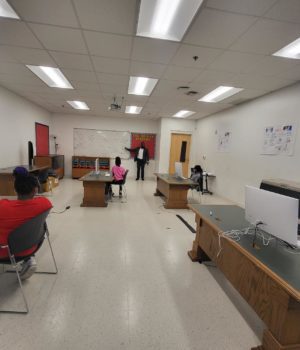
Top 10 Risks of Charter School Bond Defaults – #5 Student Retention
School Improvement Partnership is highlighting the causes or triggers of defaults on municipal charter school bonds in a weekly series entitled THE TOP TEN TRIGGERS OF CHARTER SCHOOL BOND DEFAULTS. In case you missed it, Risk # 10 was School Safety; Risk # 9, Construction Risk; Risk # 8, Shifting State Support for Charter Schools; Risk # 7, School Leadership, Risk # 6: Poor Management.
Fifth Most Common Risk: Student Retention
Introduction. Student retention measures whether a school’s students return from one year to the next. A New York City Independent Budget Office review of district and charter school students from kindergarten through 3rd grade concluded, “On average, charter school students remain at their schools at a higher rate than their traditional schools counterparts (64% vs. 56% after four years).”[1] Why should charter school bond investors care, so long as interest payments are current? Unstable or declining student retention can be a sign of more serious academic, cultural or management issues. One practice that may be uncovered is that a school is “churning” students – encouraging them to leave and admitting new students to take their place. In his new book How the Other Half Learns, Robert Pondiscio explores whether Success Academy, a large CMO in New York City, deliberately sheds struggling students in order to maintain high academic scores. He concludes interestingly, “The data showed Success Academy held on to fewer of its students than all but one other charter network in New York City, but at a rate much higher than New York City public schools in the same neighborhoods.”[2]
Based on School Improvement Partnership’s review of charter school bond defaults, starting with the first one in 2004[3], poor student retention is the 5th most common cause of charter school bond defaults for three important reasons. Every student who leaves must be replaced for financial stability to continue. Even in communities with high rates of student mobility, there is generally not an influx of new students who will be viable replacements. Just as importantly, high rates of student turnover impacts the school’s ability to provide a relatively stable cohort of students with a coherent sequence of learning experiences. Returning students and families understand how to more successfully navigate the institution, and the educators are also more familiar with the students they are supporting. Finally, low student retention can impair the charter school’s ability to ensure that its culture and climate are being systematically reinforced, as high numbers of new entrants impact the established routines. . Low student retention is more than just replacing a few thousand dollars of revenue, and failing to monitor it can lead to disastrous results.
Effect on Enrollment. Low student retention can show up in enrollment numbers that investors receive from their charter schools, which can cause financial projections to fall short. The charter school then has fewer students over which to spread its fixed costs, and financial performance soon suffers. This was the case with Delaware College Preparatory Academy in Wilmington, Delaware. It was projected to grow to 345 students when its bonds were sold; it had 186 when it shut its doors after losing students every year.[4]
Effect on Academics. High student turnover impacts students both entering and leaving the system, and the system’s ability to deliver a high quality education. While low student retention can be offset by a strong student recruitment process, there are negative consequences that flow from swapping out one student for another. It can hurt student performance, which can cause the authorizer to not renew a charter. While measures of academic performance for charter schools varies from state to state, virtually every state measures achievement vs. students in comparable schools, as well as student growth; that is, comparing an individual student’s academic performance annually. Some might assert that student growth is the purest measure of whether learning is occurring since it measures each individual student’s academic growth from year to year. It can take a new student awhile to adapt to a change of environment, with new friends, new teachers and a new culture. That reset can impair academic growth, which may land the school in trouble with families – and even the authorizer.
Effect on Climate. All schools have an expectation to bring in large numbers of new students during enrollment years (e.g. 9th grade) and few students in established cohort years. Low student retention also hurts a school’s ability to bring its unique vision, mission and culture to life. There are generally established protocols and expectation for the enrollment years and for handling the addition of a few students in cohort years, but managing consistently high turnover rates can significantly disrupt school climate. Partnerships to Uplift Communities is a 15-charter school CMO in Los Angeles which has taken student retention to the next level – with wonderful results. They have 30 alumni who have returned after college graduation to teach at their charter schools. And, with support from School Improvement Partnership, they are meeting all financial covenants on both of their charter school bond financings.
Wonder what the 4th most common cause of charter school bond defaults is? To find out, follow the School Improvement Partnership page on Linkedin.
[1] New York City Independent Budget Office, “Comparing Student Attrition Rates at Charter Schools and Nearby Traditional Public Schools” (January 20156).
[2] Pondiscio, Robert, How the Other Half Learns, 2019, p. 296.
[3] Sauk Trail Academy, a Michigan charter school,, Berry, Wendy, Charter School bond Issuance: A Complete History: Volume 3, LISC, July 2015.
[4] “Red Clay Votes to Close Charter School”, Albright, Matthew, The News Journal, December 16, 2015.



